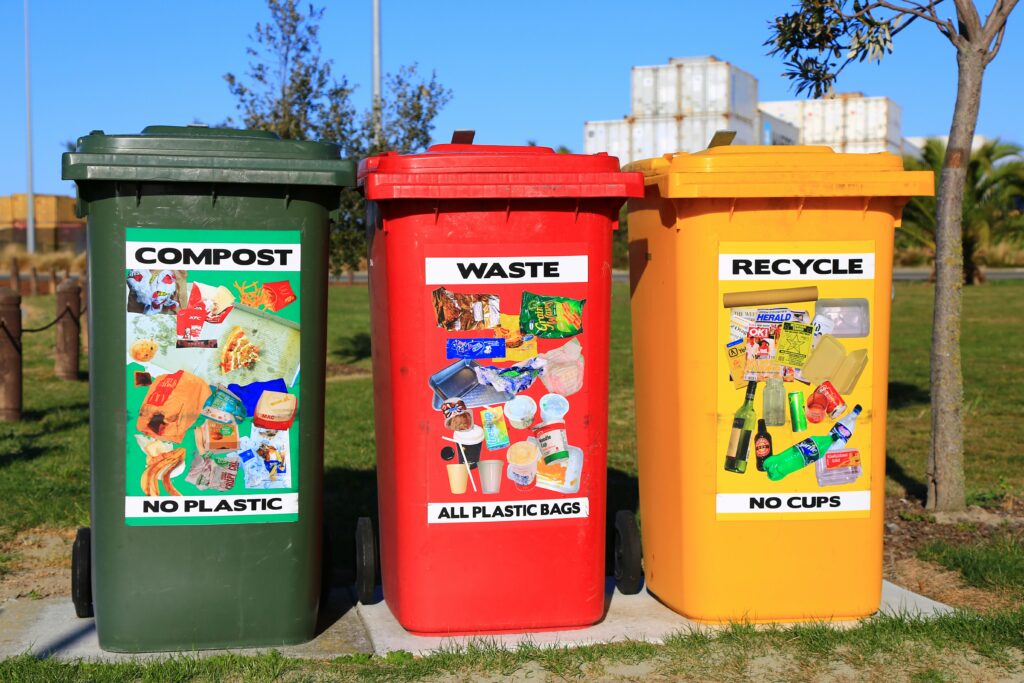Understanding the Circular Economy: A Guide for Local Businesses
The circular economy is more than just a buzzword; it’s a transformative approach to how we produce, consume, and manage resources. Unlike the traditional linear economy, which follows a ‘take-make-dispose’ model, the circular economy aims to eliminate waste and keep resources in use for as long as possible. This shift is particularly relevant for natural resource-based businesses, which often face challenges related to resource depletion, environmental impact, and regulatory pressures.
In the New York State Capital Region, where agriculture, forestry, and other natural resource-based industries are integral to the local economy, adopting circular practices can lead to significant benefits. Not only can these practices help businesses reduce costs and create new revenue streams, but they also contribute to the resilience and sustainability of the community as a whole. This guide explores practical strategies for local businesses to embrace the circular economy, demonstrating that circularity is not only achievable but also advantageous for both businesses and the communities they serve.
Key Takeaways
- Circular Economy Basics for Sustainable Business Growth: Sustainable business practices like Product as a Service (PaaS), Closed-Loop systems, and using regenerative resources are essential in transitioning businesses to adopt circular practices.
- Top Benefits of Circular Practices for Small and Medium-Sized Businesses: Circular practices can cut costs, open new revenue streams, and strengthen community ties for SMEs.
- Effective Circular Economy Strategies for Local Business Success: Product life extension, incentivized returns, and local sourcing to reduce environmental impact and boost economic resilience.
- How Closed-Loop Systems and PaaS Models Drive Business Efficiency: These strategies improve product lifecycle management, reduce costs through improved resource efficiency and reduced waste, and make businesses more scalable and adaptable for growth.
Understanding the Circular Economy
At its core, the circular economy represents a fundamental shift in the way we think about resource use and waste. Unlike the traditional linear economy, where resources are extracted, used, and then discarded, the circular economy is designed to keep resources in circulation for as long as possible. This approach not only minimizes waste but also maximizes the value extracted from raw materials, creating a more sustainable economic model. The circular economy is built on three key principles:

Design Out Waste and Pollution:
The first principle emphasizes the importance of designing products and systems that inherently reduce waste and pollution. This means rethinking how products are made, considering their entire lifecycle from the outset, and aiming to eliminate waste at every stage of production. For example, businesses can use materials that are easier to recycle or design products that can be easily disassembled and repurposed.
Keep Products and Materials in Use:
The second principle focuses on extending the life of products and materials. This can be achieved through strategies such as repair, refurbishment, and remanufacturing, as well as through business models that promote sharing or leasing rather than outright ownership. By keeping products in use for longer, businesses can reduce the demand for new resources and decrease the environmental impact associated with production.
Regenerate Natural Systems:
The third principle of the circular economy is about restoring and regenerating natural systems rather than simply sustaining them. This involves returning valuable nutrients to the soil, restoring ecosystems, and using renewable energy sources to power economic activities. By regenerating natural systems, businesses can ensure that their operations are not only sustainable but also contribute positively to the environment.
These principles are not just theoretical concepts; they provide a practical framework for businesses of all sizes to innovate and thrive in a rapidly changing economic landscape. For local natural resource-based businesses, adopting a circular economy approach offers a pathway to sustainability that aligns with both environmental stewardship and economic viability.

The Relevance of Circular Economy for Natural Resource-Based Businesses
Natural resource-based businesses, such as those in agriculture, forestry, fishing, and mining, are deeply connected to the environment. These industries rely on the extraction and use of natural resources, making them particularly vulnerable to challenges like resource depletion, environmental degradation, and increasing regulatory pressures. In this context, the circular economy offers a compelling solution.
Resource Depletion and Environmental Impact
One of the most pressing challenges for natural resource-based businesses is the depletion of the very resources they depend on. Over time, continued extraction and use of finite resources can lead to scarcity, increased costs, and potential business instability. Additionally, the environmental impact of traditional resource-based industries, including deforestation, soil degradation, and water pollution, has far-reaching consequences for ecosystems and communities.
By adopting circular economy principles, these businesses can mitigate some of these impacts. For example, an agricultural business might implement regenerative farming practices that restore soil health and reduce the need for chemical inputs, thereby preserving the land for future generations. Similarly, a forestry business could focus on sustainable harvesting and reforestation, ensuring that the forest ecosystem remains healthy and productive.
Regulatory Pressures
As governments and international bodies increasingly recognize the importance of sustainability, natural resource-based businesses are facing growing regulatory pressures. These regulations often aim to reduce environmental harm, promote resource conservation, and encourage sustainable practices. While compliance with these regulations can be challenging, it also presents an opportunity for businesses to innovate and lead in sustainability.
Circular economy practices can help businesses not only meet regulatory requirements but also exceed them, positioning themselves as leaders in sustainable development. For instance, a mining company that invests in technologies to recycle and reuse materials from its operations can reduce its environmental footprint and potentially benefit from regulatory incentives for sustainable practices.

The Path Forward
For natural resource-based businesses, the transition to a circular economy is not just a matter of compliance or environmental responsibility—it’s a strategic move that can enhance long-term viability. By rethinking how resources are used, conserved, and regenerated, these businesses can create more resilient operations that are better equipped to navigate the challenges of the future.
In the New York State Capital Region, where many businesses depend on the abundance of natural resources, embracing circular practices can lead to significant economic and environmental benefits. Whether it’s a farm reducing its dependence on chemical fertilizers through composting, or a local timber company exploring new markets for recycled wood products, the circular economy offers a pathway to sustainability that aligns with both business goals and community well-being.
Strategies for Local Businesses to Become More Circular
Transitioning to a circular economy involves adopting new strategies that maximize resource efficiency, minimize waste, and promote sustainability. For local natural resource-based businesses, these strategies can be practical and impactful, helping to secure long-term success while contributing positively to the community and environment.
Lifecycle Mapping and Assessment
A critical first step in adopting circular practices is understanding the lifecycle of products, from raw material extraction to end-of-life disposal. By mapping out each stage of the product lifecycle, businesses can identify opportunities to reduce waste, improve efficiency, and extend the life of their products.
One effective tool for this is Lifecycle Assessment (LCA), which evaluates the environmental impacts associated with all stages of a product’s life. For example, a local furniture manufacturer might use LCA to assess the environmental footprint of its products, from the harvesting of raw wood to the eventual disposal of the furniture. By identifying stages where waste can be reduced or resources can be conserved, the manufacturer can make informed decisions to improve sustainability.

Supply Chain Management
Another key strategy is optimizing the supply chain to align with circular economy principles. Shortening supply chains by sourcing materials locally can reduce transportation emissions and support the regional economy. This not only benefits the environment but also strengthens the resilience of the business by reducing reliance on distant suppliers.
For instance, a local restaurant might choose to source its ingredients from nearby farms, reducing the carbon footprint associated with long-distance transportation and ensuring fresher, higher-quality products. By fostering relationships with local suppliers, businesses can create a more integrated and sustainable supply chain that benefits the entire community.
Product Design and Longevity
Designing products for longevity is a cornerstone of the circular economy. This means creating products that are durable, easy to repair, and made from sustainable materials. By extending the life of products, businesses can reduce the demand for new resources and minimize waste.
A practical example of this strategy can be seen in a local electronics repair shop that encourages customers to repair rather than replace their devices. By offering affordable repair services and using high-quality, replaceable parts, the shop not only reduces electronic waste but also fosters a culture of sustainability among its customers.
A practical example of this strategy can be seen in a local electronics repair shop that encourages customers to repair rather than replace their devices. By offering affordable repair services and using high-quality, replaceable parts, the shop not only reduces electronic waste but also fosters a culture of sustainability among its customers.

Incentivizing Customer Product Returns
Encouraging customers to return products at the end of their life cycle is another effective circular strategy. By implementing return schemes, businesses can ensure that products are recycled, refurbished, or repurposed, keeping materials in circulation and out of landfills.
For example, a local clothing retailer might offer discounts or store credit to customers who return old garments for recycling. These garments can then be repurposed into new products, reducing waste and conserving resources. This not only promotes sustainability but also strengthens customer loyalty by offering added value.
Designing for Reusability and Durability
Lastly, designing products with reusability and durability in mind is crucial for businesses looking to adopt circular practices. Products made from eco-friendly materials that are easy to clean, repair, and repurpose can have multiple lives, reducing the need for new resources and minimizing environmental impact.
For instance, a local packaging company might design reusable containers that customers can return, refill, and use again. By focusing on durability and reusability, the company can reduce waste and offer a more sustainable alternative to single-use packaging.
Implementing a Closed-Loop System
A closed-loop system is a fundamental concept within the circular economy, designed to ensure that waste from one process becomes a valuable resource for another. By closing the loop, businesses can significantly reduce their environmental footprint, lower costs, and create new revenue streams. Implementing a closed-loop system requires careful planning and collaboration, but the benefits can be substantial, particularly for local natural resource-based businesses.

The Concept of a Closed-Loop System
In a traditional linear economy, products are made, used, and then discarded, often ending up in landfills or as environmental pollutants. A closed-loop system, on the other hand, seeks to keep resources in circulation by reusing, recycling, and repurposing materials. In this system, waste is minimized because the output of one process can serve as the input for another.
For example, a local brewery might generate significant quantities of spent grain as a byproduct of the brewing process. Rather than discarding this grain, the brewery could partner with a nearby farm to use it as animal feed, effectively turning waste into a valuable resource. This not only reduces waste but also strengthens the local economy by supporting agricultural operations.
Establishing Partnerships for Resource Exchange
One of the most effective ways to implement a closed-loop system is through partnerships with other businesses, organizations, or even local governments. These partnerships can facilitate the exchange of resources, ensuring that waste from one business becomes the input for another.
For instance, a local sawmill might produce wood chips as a byproduct of its operations. Instead of treating these wood chips as waste, the sawmill could partner with a local energy company that uses biomass to generate electricity. This collaboration creates a closed-loop system where waste is transformed into energy, benefiting both businesses and the community.
Establishing such partnerships often requires creative thinking and a willingness to explore new opportunities. Local business networks or chambers of commerce can be valuable resources for identifying potential partners and fostering collaboration.

Developing Recycling and Reuse Processes
To successfully implement a closed-loop system, businesses need to develop efficient recycling and reuse processes. This might involve investing in technology that enables the recycling of materials on-site or establishing processes to collect and transport materials to a partner business for reuse.
For example, a local construction company might establish a process to collect and recycle concrete waste from demolition sites. Instead of sending this material to a landfill, the company could crush the concrete and use it as aggregate in new construction projects. This not only reduces waste but also lowers the cost of materials for future projects.
Similarly, businesses in the food industry might implement composting processes to convert organic waste into nutrient-rich compost, which can then be used to support local agriculture. By closing the loop in this way, businesses can contribute to a more sustainable and resilient local food system.
The Benefits of a Closed-Loop System
The benefits of implementing a closed-loop system extend beyond environmental sustainability. Businesses that successfully close the loop can reduce their operating costs, create new revenue streams, and enhance their reputation as leaders in sustainability. Moreover, by keeping resources in circulation, they contribute to the resilience and prosperity of the local economy.
For natural resource-based businesses in the New York State Capital Region, adopting a closed-loop system offers a practical and impactful way to align with circular economy principles. Whether it’s through partnerships, innovative recycling processes, or the creative reuse of materials, closing the loop can help these businesses thrive in a competitive and increasingly sustainability-focused marketplace.
The Role of Product-as-a-Service (PaaS) and Sharing Platforms

As businesses explore innovative ways to adopt circular economy principles, the concepts of Product-as-a-Service (PaaS) and sharing platforms have gained significant traction. These models not only reduce waste but also offer new business opportunities that align with the circular economy’s goals of resource efficiency and sustainability.
Understanding Product-as-a-Service (PaaS)
Product-as-a-service (PaaS) is a business model where customers pay for the use of a product rather than owning it outright. This model shifts the focus from selling products to providing services, which can significantly extend the lifecycle of products and reduce waste. By retaining ownership of the product, businesses are incentivized to design durable, high-quality products that can be maintained, repaired, and upgraded over time.
For example, a local tool rental business might offer tools and equipment on a subscription basis rather than selling them. Customers can rent the tools they need for specific projects and return them when finished. This model not only makes tools more accessible and affordable for customers but also ensures that the tools are used to their full potential, rather than sitting unused in a garage or workshop.
PaaS also encourages businesses to take responsibility for the end-of-life management of their products. Because the business retains ownership, it has a vested interest in ensuring that products are properly maintained and eventually recycled or repurposed. This can lead to significant reductions in waste and the more efficient use of resources.
The Rise of Sharing Platforms
Sharing platforms are another powerful tool in the circular economy toolkit. These platforms facilitate the sharing of products, services, or resources among multiple users, maximizing the utilization of existing assets and reducing the need for new products.
In the New York State Capital Region, sharing platforms could play a crucial role in promoting circular economy practices. For example, a community might establish a tool library where residents can borrow tools for home improvement projects. This reduces the need for each household to purchase and store rarely used tools, leading to lower overall consumption and waste.
Similarly, local businesses could collaborate to create a shared inventory of equipment or vehicles, reducing the need for each business to invest in its own fleet. This not only lowers costs but also reduces the environmental impact associated with manufacturing, maintaining, and operating these assets.

Benefits of PaaS and Sharing Platforms
Both PaaS and sharing platforms offer numerous benefits for businesses, consumers, and the environment. For businesses, these models provide opportunities to generate recurring revenue streams, build stronger customer relationships, and reduce costs associated with product maintenance and disposal. For consumers, PaaS and sharing platforms offer greater flexibility, affordability, and access to high-quality products and services.
From an environmental perspective, PaaS and sharing platforms contribute to the circular economy by reducing resource extraction, minimizing waste, and lowering carbon emissions. By promoting the efficient use of products and resources, these models help create more sustainable consumption patterns and reduce the environmental footprint of businesses and communities.
Implementing PaaS and Sharing Platforms in Local Businesses
For local natural resource-based businesses, implementing PaaS or participating in sharing platforms can be a strategic move that aligns with circular economy principles. For instance, a local agricultural equipment supplier might offer machinery as a service, allowing farmers to lease equipment as needed rather than purchasing it outright. This approach can help farmers reduce capital expenditures and ensure they have access to the latest technology without the burden of ownership.
Likewise, a cooperative of local businesses might establish a shared platform for renting out specialized equipment or vehicles, reducing costs and enhancing resource efficiency. By embracing these models, businesses can enhance their sustainability efforts while creating new opportunities for growth and innovation.
Benefits of Adopting Circular Business Practices

Adopting circular business practices offers numerous advantages for local natural resource-based businesses, extending beyond environmental sustainability to encompass economic resilience, community development, and competitive differentiation. By shifting from a linear to a circular economy model, businesses can unlock a range of benefits that contribute to their long-term success and the well-being of the local community.
Resilient Supply Chains
One of the most significant benefits of circular business practices is the creation of more resilient supply chains. In a linear economy, businesses often rely on a continuous supply of raw materials, which can be vulnerable to price fluctuations, geopolitical instability, and resource scarcity. By adopting circular practices, businesses can reduce their dependence on virgin materials and create a more stable, predictable supply chain.
For example, a local woodworking business might choose to use reclaimed or recycled wood instead of sourcing new timber. This not only reduces the demand for raw materials but also insulates the business from price volatility in the timber market. Additionally, by sourcing materials locally or within closed-loop systems, businesses can reduce transportation costs and emissions, further enhancing supply chain resilience.
Improved Local Economic Development
Circular business practices can also drive local economic development by fostering new industries, creating jobs, and keeping resources within the community. When businesses adopt circular models, they often collaborate with local suppliers, recyclers, and service providers, contributing to a more integrated and self-sufficient local economy.
For instance, a local textile company that implements a take-back program for old clothing might partner with local recycling facilities to process the returned garments. This not only reduces waste but also supports the growth of the local recycling industry, creating jobs and stimulating economic activity. By keeping resources in circulation within the community, circular businesses contribute to a more robust and resilient local economy.

Lower Carbon Footprint
Reducing the carbon footprint is a key objective of the circular economy, and businesses that adopt circular practices can make significant strides in this area. By focusing on resource efficiency, waste reduction, and local sourcing, businesses can lower their greenhouse gas emissions and contribute to the fight against climate change.
For example, a local food producer might reduce its carbon footprint by sourcing ingredients from nearby farms, minimizing transportation emissions. Additionally, by implementing closed-loop systems that recycle organic waste into compost, the business can further reduce its environmental impact. These efforts not only benefit the environment but also enhance the company’s reputation as a responsible and sustainable business.
Enhanced Brand Reputation and Customer Loyalty
As consumers become more environmentally conscious, businesses that embrace circular economy principles can differentiate themselves in the marketplace. By demonstrating a commitment to sustainability, businesses can enhance their brand reputation, attract new customers, and build stronger relationships with existing ones.
For example, a local retailer that offers products made from recycled materials or that supports a take-back program for used goods can position itself as a leader in sustainability. This can attract customers who prioritize eco-friendly practices and who are willing to support businesses that align with their values. Additionally, by offering sustainable products and services, businesses can build customer loyalty, as consumers are more likely to return to brands they trust to be environmentally responsible.
Cost Savings and New Revenue Streams
Finally, circular business practices can lead to significant cost savings and the creation of new revenue streams. By reducing waste, improving resource efficiency, and extending the lifecycle of products, businesses can lower their operating costs and increase profitability.
For instance, a local manufacturer that implements a remanufacturing program for its products can reduce the need for new materials and labor, lowering production costs. Additionally, by offering repair or refurbishment services, the business can create new revenue streams and capture value from products that would otherwise be discarded.
Similarly, businesses that participate in sharing platforms or adopt Product-as-a-Service (PaaS) models can generate recurring revenue by offering products on a subscription basis. This not only provides a steady income but also strengthens customer relationships by providing ongoing value.

Conclusion
The transition to a circular economy represents a powerful opportunity for local natural resource-based businesses in the New York State Capital Region. By embracing circular practices, these businesses can not only reduce their environmental impact but also strengthen their economic resilience, support local communities, and differentiate themselves in a competitive marketplace.
From adopting closed-loop systems to implementing Product-as-a-Service (PaaS) models and participating in sharing platforms, the strategies discussed offer practical pathways for businesses to integrate circular economy principles into their operations. The benefits of this approach are far-reaching, from creating more resilient supply chains and fostering local economic development to lowering carbon footprints and enhancing brand reputation.
For policymakers, community activists, and educators, supporting the adoption of circular practices among local businesses can drive significant progress toward sustainability goals. By fostering an environment that encourages innovation, collaboration, and resource efficiency, these stakeholders can help build a more sustainable and prosperous future for the region.
Ultimately, the shift to a circular economy is not just an environmental imperative; it is a strategic business decision that can lead to long-term success and community well-being. As local businesses take the lead in this transition, they will contribute to a more resilient, equitable, and sustainable economy that benefits everyone.
- Understanding the Circular Economy: A Guide for Local Businesses - October 28, 2024
- Ecosystem Services at Sebago Lake: Nature’s Role in Water Filtration and Conservation - August 30, 2024
- Climate Migration and Displacement: A Look at the Ripple Effect - February 29, 2024